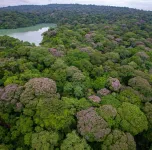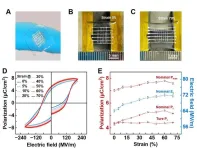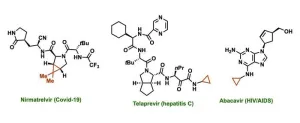Researchers discuss the ethical challenges of studying DNA from a 18th–19th century African American community
2023-08-03
(Press-News.org) A population genetics team recently identified the genetic relationship between over 40,000 23andMe users and a population of enslaved and free African Americans that lived in Catoctin Furnace, Maryland between 1776–1850. Over the course of this study, the researchers considered how best to inform descendants and other genetic relatives of their genetic connection to the site. The group has published their considerations and the ethical questions they have encountered on August 3rd in the American Journal of Human Genetics.
“This study required us to consider several ethical issues that had not been explicitly addressed in the existing literature on ethics in ancient DNA,” say the authors, led by Éadaoin Harney (@EadaoinSays), a population geneticist at 23andMe. “This work has contributed to community and national conversations about the role that scientific approaches can play in restoring information about the lives of enslaved people that would otherwise be lost to history.”
The team’s genetic analysis hoped to further the goals of community stakeholders who wish to “identify and foster a Catoctin descendent community” by identifying previously unknown connections to living descendants. They analyzed human remains from an undocumented African American cemetery under stewardship of the Smithsonian and in coordination with The Catoctin Furnace Historical Society and self-identified descendants of the Catoctin Furnace community.
Most stakeholders agreed that these genetic results should be shared with relevant 23andMe users, but with proper user consent. The researchers note that people might be distressed to find out they have an ancestral connection to slavery, so an opt-in program could be an optimal way of letting users decide for themselves whether they want to learn about their genetic links to Catoctin Furnace or not.
In addition, the team warns that geneticists need to be wary of “biologically gatekeeping” who is and is not a Catoctin Furnace stakeholder. There is already a self-identified community of stakeholders who are connected by cultural and kinship bonds, and any member’s genetic results should not minimize their group identity.
“Returning inaccurate results or returning results in a confusing way may actively harm community stakeholders, people or organizations who serve as stewards for human remains, those who serve in other roles that involve educating the public about specific historical individuals or sites, or broader public understanding,” say the authors. “Reports created by genetic ancestry companies should be created with enough educational content and detail so that customers with shared genetic connections can interpret their results without the need for guidance from outside organizations.”
Even though 23andMe has a genetic dataset more than an order of magnitude larger than any publicly available genetic dataset and thus was an optimal organization for identifying Catoctin descendants and other relatives, many genetic researchers argue that companies should not be able to benefit financially from ancient genetic datasets tied to living descendants. To address this concern, 23andMe and collaborators at Harvard and the Howard Hughes Medical Institute agreed that the Catoctin data could not be used for non-research purposes until after it was made publicly available.
23andMe also refrains from sharing individual-level genetic data in order to protect their customers’ privacy, but this can make it difficult for other researchers to reproduce published results. To address this dilemma, 23andMe has agreed to rerun genetic comparisons of this study upon request for academic and non-profit researchers for a limited amount of time.
“There is no perfect solution to this problem, but weighed against this is the fact that leveraging a genetic database as large as 23andMe’s in ancient DNA powers research that otherwise would be impossible. In fact, it is possible that 23andMe’s high research participation rate can be attributed in part to the strong privacy protections that are offered to research participants,” the authors write in the paper.
###
This work was supported by the Howard Hughes Medical Institute, John Templeton Foundation, and National Institutes of Health. Information about conflicts of interest can be found in the text of the paper.
The American Journal of Human Genetics, Harney et al. “Ethical considerations when co-analyzing ancient DNA and data from private genetic databases” https://www.cell.com/ajhg/fulltext/S0002-9297(23)00212-4
The American Journal of Human Genetics (@AJHGNews), published by Cell Press for the American Society of Human Genetics, is a monthly journal that provides a record of research and review relating to heredity in humans and to the application of genetic principles in medicine and public policy, as well as in related areas of molecular and cell biology. Visit: http://www.cell.com/ajhg. To receive Cell Press media alerts, contact press@cell.com.
END
ELSE PRESS RELEASES FROM THIS DATE:
2023-08-03
Tropical forests often harbor hundreds of species of trees in a square mile, but scientists often struggle to understand how such a diversity of species can coexist. In a study published in Science, researchers at The University of Texas at Austin have provided new insights into the answer by uncovering a key characteristic of the spatial distribution of adult trees.
Combining computational modeling with data collected during a 30-year period, the researchers discovered that adult trees in a Panamanian forest are three times as distant from other adults of the same species as what the proverbial “the apple doesn’t fall far from ...
2023-08-03
A research group led by Prof. LI Runwei at the Ningbo Institute of Materials Technology and Engineering (NIMTE) of the Chinese Academy of Sciences (CAS) have proposed a "slight crosslinking" method that imparts elastic recovery to ferroelectric materials.
The study was published in Science.
Ferroelectric materials are very useful for applications such as data storage and processing, sensing, energy conversion, and optoelectronics, etc., making them highly desirable in mobile phones, tablets and other ...
2023-08-03
In an Editorial, Cynthia Bulik and Andrew Hardaway highlight the recent advances in medical treatments for obesity and weight loss. “With the emergence of new, highly effective weight-loss drugs, might the ‘fat decades’ become a closed chapter in the history of public health?” ask the authors. The “obesity epidemic” is a global health concern, with more than a billion people affected by obesity and many more overweight. Although various environmental, biological, and behavioral factors have been implicated in obesity, few consistently effective treatments exist for the disease. Recently, however, new weight-loss ...
2023-08-03
In this Policy Forum, Robin Gregory and colleagues highlight how a suite of methodological approaches can be used to bring less tangible social and cultural losses that marginalized groups incur into the formal compensation assessment framework. “Though the issues and approaches we describe are applicable in many contexts,” the authors write, “we illustrate them … with a focus on Indigenous communities, for whom the neglect of social and cultural losses in assessments of compensation ...
2023-08-03
Tropical trees distance themselves from members of their own species more than they do other species, a new study shows. What’s more, trees of the same species exist at distances farther apart than would be expected by chance or the limits of seed dispersal. The results reveal pervasive within-species spatial repulsion in adult trees, providing new insights into the ecological dynamics that stabilize species diversity and enable the exceptionally high diversity of tropical forests. Tropical forests host an unusually high diversity of tree species. For example, some tropical forests contain more than 250 tree species per hectare. However, how hundreds of species coexist on relatively small ...
2023-08-03
Peptide YY (PYY), a hormone produced by gut endocrine cells that was already known to control appetite, also plays an important role in maintaining the balance of fungi in the digestive system of mammals, according to new research from the University of Chicago.
In a study published this week in Science, researchers found that specialized immune cells in the small intestine called Paneth cells express a form of PYY that prevents the fungus Candida albicans from turning into its more virulent form. PYY was already known to be produced by endocrine cells in the gut as a hormone that signals satiety, or when an animal has had enough to eat. The new research shows that it also ...
2023-08-03
UNIVERSITY PARK, Pa. — Chemical structures called cyclopropanes can increase the potency and fine-tune the properties of many drugs, but traditional methods to create this structure only work with certain molecules and require highly reactive—potentially explosive—ingredients. Now, a team of researchers from Penn State has identified and demonstrated a safe, efficient and practical way to create cyclopropanes on a wide variety of molecules using a previously undescribed chemical process. With additional development, the new method—described ...
2023-08-03
CAMBRIDGE, MA -- A signaling protein known as STING is a critical player in the human immune system, detecting signs of danger within cells and then activating a variety of defense mechanisms.
STING is primarily on the lookout for DNA, which can indicate either a foreign invader such as a virus or damage to the host tissue or cell. When STING detects that danger signal, it can turn on at least three different pathways — one leading to interferon production, one to non-canonical autophagy (involved in recycling cell components and clearing pathogens), and a third to formation of the inflammasome, a complex of proteins that activates ...
2023-08-03
The Gulf Stream, which brings warm water from the Gulf of Mexico to Europe and keeps the climate mild, is only part of a larger system of oceanic currents called the Atlantic Meridional Overturning Circulation, or AMOC for short. It runs through the Atlantic like a giant climate machine: as warm water from the tropics is transported northwards at the surface, the current reverses in the North Atlantic – the water cools, becomes heavier and flows south at depth.
Where exactly these sinking processes take place is the subject of current research, and recent measurement programmes have located them to the east of Greenland. ...
2023-08-03
Paris, France – August 3, 2023 – The First International Congress on Artificial Intelligence and Medicine, AI & Medicine 2024, is set to take place on April 11-12, 2024, in Paris, France. Building on the success of IA & Néphrologie 2023, the conference aims to bridge the gap between cutting-edge technology and health care.
AI & Medicine 2024 aims to inform medical professionals about the capabilities of advanced machine learning techniques, and simultaneously raise awareness within the tech industry regarding the unique challenges and requirements of the healthcare sector. The congress will offer a platform to discuss the current applications of AI in diagnostics, ...
LAST 30 PRESS RELEASES:
[Press-News.org] Researchers discuss the ethical challenges of studying DNA from a 18th–19th century African American community



